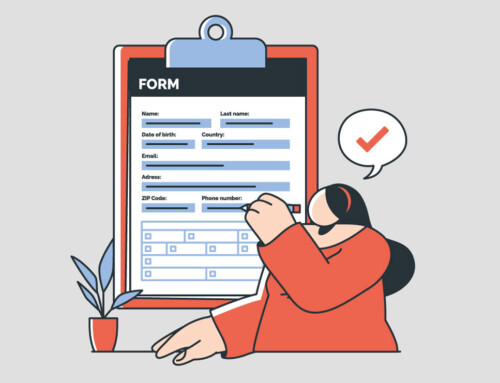Contents
In the world of business and legal agreements, contracts serve as the foundational documents that outline the rights and obligations of the involved parties. However, as circumstances evolve, there often arises a need to modify these original agreements without starting from scratch. This is where an addendum to a contract comes into play.
An addendum to a contract is a supplementary document added to an existing contract to modify, clarify, or add new terms and conditions. Rather than drafting an entirely new contract, an addendum serves as an extension or modification of the original agreement, allowing for necessary adjustments as new information or situations emerge. This flexibility is particularly valuable in dynamic environments where changes are inevitable.
Addenda are commonly utilized across various industries and contract types, including real estate transactions, employment agreements, and service contracts. In real estate, for example, addenda are often used to modify purchase agreements, adjust closing dates, or include additional property disclosures. In employment contracts, addenda can accommodate changes in job roles, salaries, or employment terms. Service contracts may require addenda to reflect changes in the scope of work, project deadlines, or payment schedules, ensuring that the obligations of both parties are clearly defined and agreed upon.
An addendum to a contract is a vital tool for making necessary modifications to existing agreements. It provides a structured and legally recognized method for parties to adapt to changing circumstances while maintaining the integrity and enforceability of the original contract. Understanding how to effectively create and implement an addendum is essential for anyone involved in contractual relationships.
What is an Addendum to a Contract?
An addendum to a contract is a document that is added to an existing contract to modify, clarify, or add new terms and conditions. It serves as an extension or modification to the original agreement, allowing the parties involved to make necessary adjustments without having to draft a completely new contract. This can be particularly useful in dynamic situations where circumstances change, or new information comes to light after the original contract has been signed.
The primary purpose of an addendum is to address changes that arise during the course of a contractual relationship. This could include altering timelines, revising payment terms, adding new responsibilities, or clarifying ambiguous clauses. The addendum ensures that all parties have a clear understanding of their obligations and the terms under which they are operating, thus preventing potential disputes.
For the addendum to be valid and enforceable, it must be agreed upon and signed by all parties involved in the original contract. This mutual agreement signifies that each party consents to the new terms and acknowledges their understanding of how these changes impact the original agreement. Without the necessary signatures, the addendum holds no legal power and cannot be enforced.
Common Uses of Addenda
Addenda are commonly used across a wide range of contracts and industries, including:
- Real Estate Transactions
In real estate, addenda are frequently used to modify purchase agreements. For example, an addendum might be used to change the closing date, adjust the purchase price, or include additional property disclosures. Given the complexity and high value of real estate transactions, it is common for multiple addenda to be added as negotiations proceed and new conditions arise.
- Employment Agreements
Employment contracts often require addenda to accommodate changes in job roles, salaries, or employment terms. For instance, if an employee receives a promotion, an addendum can outline the new responsibilities, compensation package, and any other changes to the original employment terms.
- Service Contracts
Service contracts, such as those for consulting, maintenance, or IT services, may require addenda to reflect changes in the scope of work, project deadlines, or payment schedules. This allows both parties to adapt to evolving project requirements and ensure that the service provider’s obligations are clearly defined.
Elements of an Effective Addendum
To be effective and legally binding, an addendum should include the following elements:
- Title and Reference: Clearly title the document as an “Addendum” and reference the original contract by name, date, and parties involved.
- Effective Date: State the date on which the addendum becomes effective.
- Detailed Modifications: Specify the exact changes, additions, or deletions to the original contract. Use clear and concise language to avoid any ambiguity.
- Signature and Date: Include spaces for all parties to sign and date the addendum. This indicates their agreement to the new terms.
- Integration with Original Contract: Ensure that the addendum explicitly states that all other terms and conditions of the original contract remain in full force and effect, except as modified by the addendum.
How to Add an Addendum to a Contract?
Adding an addendum to a contract involves several steps to ensure that it is properly drafted and legally binding. First, review the original contract carefully to understand its terms and conditions. Then identify the specific sections or clauses that need to be modified or added to.
Second, draft the addendum and title the document “Addendum to [Original Contract Name]” to clearly indicate its purpose. Include a reference to the original contract, mentioning its title, date, and parties involved. And clearly state the modifications, additions, or deletions to the original contract. Be specific and detailed to avoid any ambiguity.
Third, number the addendum, if there are multiple addenda, number them sequentially (e.g., “First Addendum,” “Second Addendum”). Fourth, specify the effective date on which the addendum becomes effective. Fifth, provide space for the signatures of all parties involved in the original contract. Each party should sign and date the addendum to indicate their agreement to the new terms.
Sixth, once signed distribute copies of the addendum to all parties and attach the signed addendum to the original contract to keep all documents together.
Finally, consider having the addendum reviewed by a legal professional to ensure it is properly drafted and enforceable.
Is an Addendum to a Contract Legally Binding?
Yes, an addendum to a contract can be legally binding if it meets certain criteria. Here are the key points to consider:
- Mutual Agreement: Both parties to the original contract must agree to the addendum. This means both parties need to sign the addendum, indicating their consent to the changes.
- Consideration: There must be some form of consideration (something of value exchanged) for the addendum to be enforceable. This can be a continuation of the original consideration or something new.
- Compliance with Original Contract Terms: The addendum must comply with the terms of the original contract. Some contracts specify how amendments or addendums should be made (e.g., in writing, signed by both parties, etc.).
- Legality and Clarity: The addendum must be clear and specific about the changes it is making to the original contract. It must also be legal and not violate any laws or public policy.
- Reference to Original Contract: The addendum should explicitly reference the original contract, stating that it is an amendment to that specific agreement. This helps to avoid confusion and ensures that the changes are clearly connected to the original terms.
If these conditions are met, an addendum can effectively alter or add to the terms of the original contract and be enforceable in a court of law.
Contract Addendum vs Amendment
When dealing with contracts, it is important to understand the difference between an addendum and an amendment. Both are tools used to modify existing contracts, but they serve different purposes and are used in different contexts.
An addendum is a document that is added to an existing contract to include additional terms, conditions, or clauses. It does not change the original terms of the contract but supplements it with new information. It adds new terms or conditions that were not originally included and provides additional details or clarifies aspects of the contract without altering the existing terms. It is used when new information or terms need to be added to the contract. For example, if a service contract initially covers only software development, an addendum could be added later to include support and maintenance services.
On the other hand, an amendment is a formal alteration made to the existing terms and conditions of a contract. It modifies, deletes, or adds to the original provisions of the contract. It changes the terms or conditions already present in the contract, corrects errors, updates terms, or responds to changing circumstances. It is used when existing terms need to be modified, such as changing the delivery date, altering payment terms, or adjusting the scope of work. Additionally, it is applicable to various types of contracts, including business agreements, leases, and employment contracts. For example, if a construction contract specifies a completion date of June 1st, an amendment might change this date to July 1st due to unforeseen delays.
Example Scenarios
Addendum Scenario: A real estate purchase agreement includes an addendum to cover additional repairs requested by the buyer. The original agreement remains unchanged, but the addendum adds specific terms about the repairs to be done before closing.
Amendment Scenario: An employment contract originally states a salary of $50,000 per year. An amendment is made to increase the salary to $55,000 per year. The amendment changes the specific term in the original contract regarding the salary.
How to Write an Addendum to a Contract?
Writing an addendum to a contract involves a few key steps to ensure it is clear, legally binding, and effectively modifies the original agreement.
Title: Clearly title the document as an “Addendum to [Original Contract Name].” Include the date of the original contract.
Introduction: Begin with a statement that identifies the parties involved, the original contract, and the purpose of the addendum. For example: “This Addendum to the [Original Contract Name], dated [date of original contract], is made and entered into by and between [Party 1] and [Party 2]. This Addendum is intended to amend certain terms and conditions of the original contract.”
List the Amendments: Clearly outline the specific changes or additions to the original contract. Use numbered or bulleted points for clarity. Each point should refer to the specific section of the original contract being amended. For example:
- “Section 3.1 of the original contract is hereby amended to read as follows: [new or revised terms].”
- “The following section is added to the original contract as Section 4.5: [text of the new section].”
Confirmation of the Original Contract: Include a statement confirming that all other terms and conditions of the original contract remain unchanged and in full effect. For example: “Except as specifically amended by this Addendum, all terms and conditions of the original contract shall remain in full force and effect.”
Signatures: Provide spaces for all parties to sign and date the addendum. Signatures indicate mutual agreement to the changes. For example:
markdown
- ___________________________
Date: _____________________
___________________________
[Party 2 Name], [Title]Date: _____________________
Notarization (if required): If the original contract or the nature of the addendum requires notarization, include a section for the notary public to sign and seal.
Example Template for an Addendum
Addendum to [Original Contract Name]
This Addendum (the “Addendum”) is made on [Effective Date], by and between [Party A] and [Party B] (collectively referred to as the “Parties”).
WHEREAS, the Parties entered into a contract dated [Original Contract Date] (the “Original Contract”);
WHEREAS, the Parties now desire to amend the Original Contract as set forth in this Addendum;
NOW, THEREFORE, in consideration of the mutual covenants and promises herein contained, the Parties agree to amend the Original Contract as follows:
- [Specify the changes, additions, or deletions in detail.]
All other terms and conditions of the Original Contract remain in full force and effect.
IN WITNESS WHEREOF, the Parties have executed this Addendum as of the day and year first above written.
[Party A Signature] ____________________ Date: _______________ [Party A Name and Title]
[Party B Signature] ____________________ Date: _______________ [Party B Name and Title]
Conclusion
In conclusion, an addendum to a contract is a crucial tool for making necessary modifications to existing agreements without the need to draft entirely new documents. It provides flexibility and adaptability, allowing parties to update terms, clarify responsibilities, and address new circumstances as they arise. Whether used in real estate, employment, or service contracts, an addendum helps maintain the clarity and enforceability of the original contract while accommodating changes. By following proper procedures to draft, review, and execute an addendum, parties can ensure that their contractual relationships remain clear, mutually agreeable, and legally binding. Understanding the significance and application of contract addenda is essential for anyone engaged in contractual agreements, as it facilitates smoother adjustments and helps prevent potential disputes.
Frequently Asked Questions
1.Can you add an amendment to an addendum?
Yes, it is possible to add an amendment to an addendum. The process of adding an amendment to an addendum is similar to amending the original contract and involves several key steps. First, all parties involved in the original contract and the addendum must agree to the amendment, and this agreement should be clearly documented and signed by all parties. Second, the amendment should be put in writing to ensure clarity and provide a clear record of the agreed changes. Third, the amendment should clearly reference the original contract and the addendum it is modifying to avoid any confusion about which documents and terms are being changed. Fourth, there should be some form of consideration for the amendment, as with any contractual change, to ensure it is legally enforceable. Finally, the amendment must be legal and clearly specify the changes being made to the addendum, without contradicting any terms of the original contract or the addendum unless those terms are specifically being altered by the amendment.
2.Who can propose an addendum or an amendment to a contract?
Any party involved in the original contract can propose an addendum or amendment. This includes the main individuals or entities who signed the original agreement, such as business partners, employers and employees, buyers and sellers, or service providers and clients. Additionally, individuals who have been authorized to act on behalf of the primary parties, such as managers, legal representatives, or authorized agents, can propose changes. These representatives must have explicit permission to suggest modifications to the contract terms. Regardless of who initiates the proposal, mutual agreement is essential for adding an addendum or amendment. All involved parties must review, agree to, and sign the changes for them to become legally binding. This ensures that everyone understands and consents to the modifications, maintaining the contract’s validity and enforceability.
3.Are there specific provisions in contracts concerning amendments or addendums?
Yes, contracts often include specific provisions regarding amendments and addendums to ensure any changes are made in a clear, agreed-upon manner. Here are some common provisions you might find:
- Amendment Clause: This clause outlines how amendments to the contract can be made.
- Addendum Clause: Similar to the amendment clause, this provision specifies how addendums are added to the contract.
- Integration Clause (Entire Agreement Clause): This clause states that the contract, including any amendments and addendums, constitutes the entire agreement between the parties. It often includes:
- Notification Clause: This provision details how and when parties must be notified of amendments or addendums.
- Review and Approval Clause: This clause might require that any proposed amendments or addendums be reviewed and approved by certain individuals or committees before becoming effective.
- Change Control Process: In more complex contracts, especially those related to projects or services, a detailed change control process might be included.
Disclaimer: The content provided on this blog is for informational purposes only and does not constitute legal, financial, or professional advice.






